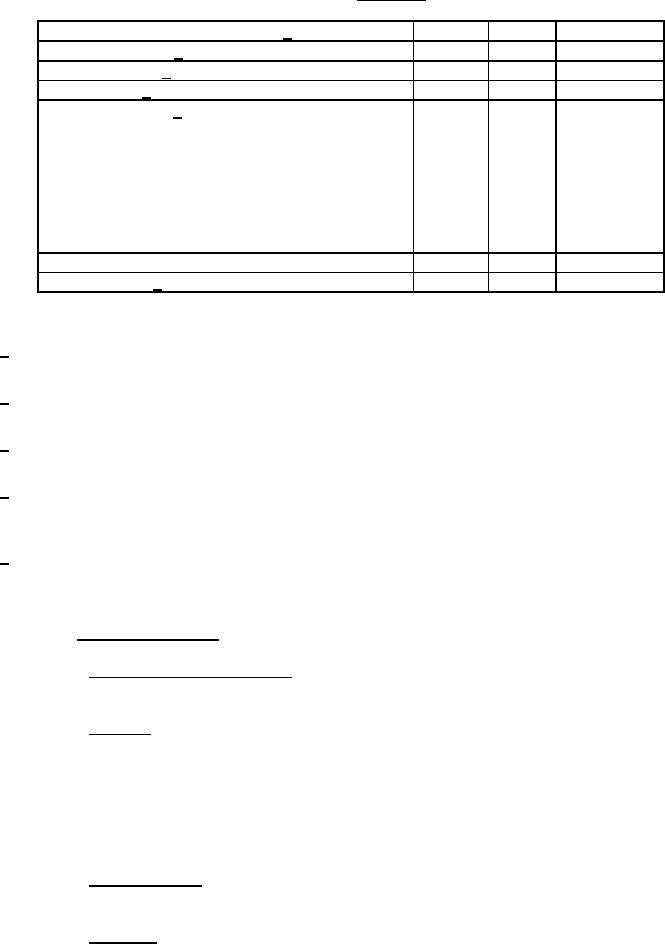
MIL-DTL-46540C(AR)
TABLE V. Casualties
Defect Description 1/
Acc
Rej
Classification
Failure to chamber 1/
0
1
Critical
Failure to extract 2/
0
1
Critical
Blown primer 3/
0
1
Major
Splits and ruptures 4/
Splits:
Minor
17
I or S
6
Minor
12
J
2
Critical
1
K, L, or M
0
Rupture, partial
Minor
6
1
S, J, or K
Critical
1
0
L
Circumferential rupture, complete
0
1
Critical
Detached metal 5/
0
1
Major
Notes:
1/ The case lot will not be penalized if malfunction cannot be shown to have resulted from a defective
case.
2/ A fired sample cartridge case remaining in the chamber after the normal extraction cycle will be
classed defective, unless it can be shown that the malfunction was caused by a defective weapon.
3/ The sample cartridge case shall be classed defective only if it is evident by visual inspection that both
the primer pocket and case head are enlarged and deformed.
4/ Refer to drawing C7258801 and SCATP-20 for classifying splits and ruptures resulting from the
function and casualty test. If a split or partial rupture extends into two or more defined areas, only the
most severe defect criterion of Table V for the areas involved shall be used.
5/ The case lot will not be penalized if malfunction cannot be shown to have resulted from a defective
case. There must be evidence of detached metal from fired case exterior. The lot will not be penalized for
the detachment of metal shavings from the projectile crimped area of the case interior.
4.4 Method of inspection.
4.4.1 Head rim thickness, maximum. The equipment design shall provide controls that will
assure rejection of defective cartridge cases (see 6.8).
4.4.2 Hardness. The cases of the test samples shall be sectioned as shown on drawing D7553815.
The head sections will have approximately parallel surfaces finished to 63 microinches or finer, care
being taken not to change the hardness in obtaining this finish. Four determinations each shall be made at
the indicated body and neck positions for each sample case, two on each half on the interior as shown.
Two determinations each shall be made at the indicated head position as shown for each sample case. The
method of test shall be in accordance with ASTM E18-67, Rockwell Hardness and Rockwell Superficial
Hardness of Metallic Materials.
4.4.3 Residual stresses. The method of test shall be as specified in SCATP-20 for case mercurous
nitrate test.
4.4.4 Neutrality. The method of testing cartridge cases for acidity and alkalinity shall be as
follows using red and blue sensitive litmus paper. Neutral distilled water will be used to moisten the paper
7
For Parts Inquires submit RFQ to Parts Hangar, Inc.
© Copyright 2015 Integrated Publishing, Inc.
A Service Disabled Veteran Owned Small Business